This October marks two years since the 2023 Indigenous National Strike in Guatemala, a historic mobilization that brought together thousands of people across the country in defense of democracy, dignity, and the rights of Indigenous Peoples.
For 106 days, Indigenous Authorities and community leaders from different peoples coordinated peaceful blockades, gatherings, and collective actions across the country, including massive mobilizations in Guatemala City, to demand transparency, respect for popular will, and an end to corruption.
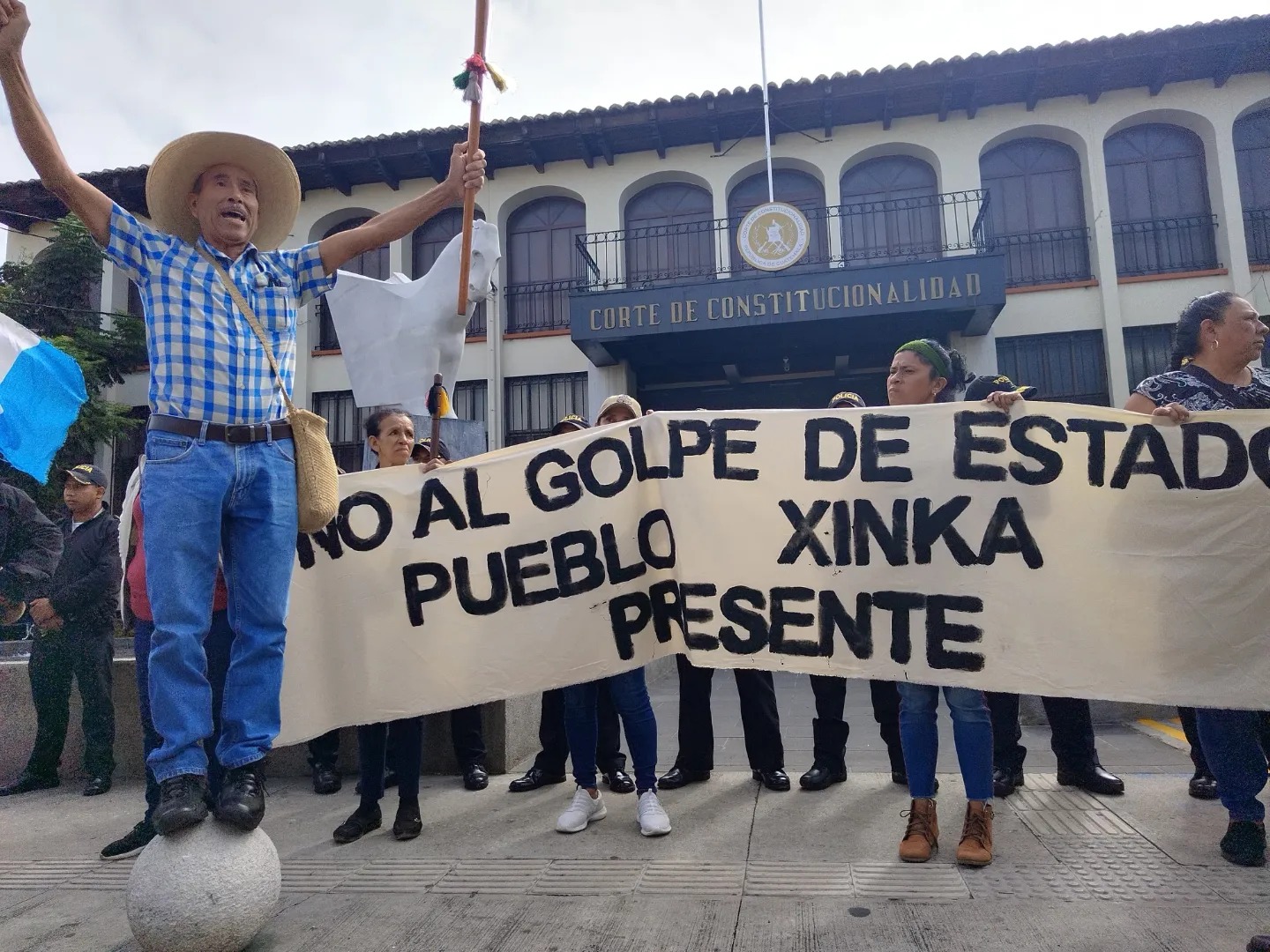
Xinka People mobilize in front of the Constitutional Court in Guatemala City during the 2023 National Strike, standing together to defend democracy and dignity. Photo by Colectivo Anpük, October 2023.
Organization and solidarity among communities were fundamental: many stood firm in front of the Public Prosecutor’s Office in Gerona for weeks, demanding an end to attacks on democracy and institutions. The strike reflected a long legacy of collective resistance and care for life, guided by ancestral leadership and the strength of the peoples.
In the words of Víctor Sales, Departmental Coordinator of the Assembly of the Peoples of Huehuetenango in Defense of the Territory and for the Autonomy and Self-Determination of the Peoples (ADH):
“The main purpose of the National Strike was, strategically, to defend the popular and democratic vote — above all, to ensure that the president of the republic could take office, and ultimately, to defend the people’s democracy. The peoples placed their trust and hope in achieving their great dream — real changes in their lives — as part of the continuation and search for a second democratic spring, the one that had begun under Dr. Juan José Arévalo and Jacobo Árbenz Guzmán. That dream could only be achieved through the administration of President Bernardo Arévalo de León.
Unfortunately, as the current president began to carry out his plan, he ran into a great wall called ‘The Pact of the Corrupt,’ whose goal is to seize control of all branches of the State. Now, the president’s political and legal battle is to dismantle every kind of deceitful tactic used by this Pact, which heavily obstructs the government from showing the people what it truly intends to do and its plan for change.
It is unfair to say that the government is doing nothing — we affirm that it is doing something, mainly uncovering acts of corruption. But the strategy of the corrupt is to turn everything into a desert, into disaster. Why does the government still resist? Because international politics has offered it some support — perhaps just a small portion, but one that extends across continents — and this helps to keep its administration from collapsing.
We are neither against nor in favor of the president, but the government and his cabinet have fallen into misfortune — slow to react, with lukewarm actions, losing focus on their central strategies. They have not taken advantage of the most powerful machinery, the one called ‘the people.’ Perhaps they do not fully trust that decisive force. The cost, until today, has been a decline in credibility for him and his administration.
If the government and its cabinet fail to uncover the tactics and strategies used by the Pact of the Corrupt, our peoples will fall into decline. We will suffer greatly — setbacks, crises, fear, criminalization — and perhaps even chaos, whose end no one can foresee.”
Throughout the strike, Ancestral Authorities from various Maya Peoples carried out community ceremonies, assemblies, and justice rituals such as the sacred Xik’ay, denouncing corruption and calling for an end to impunity.
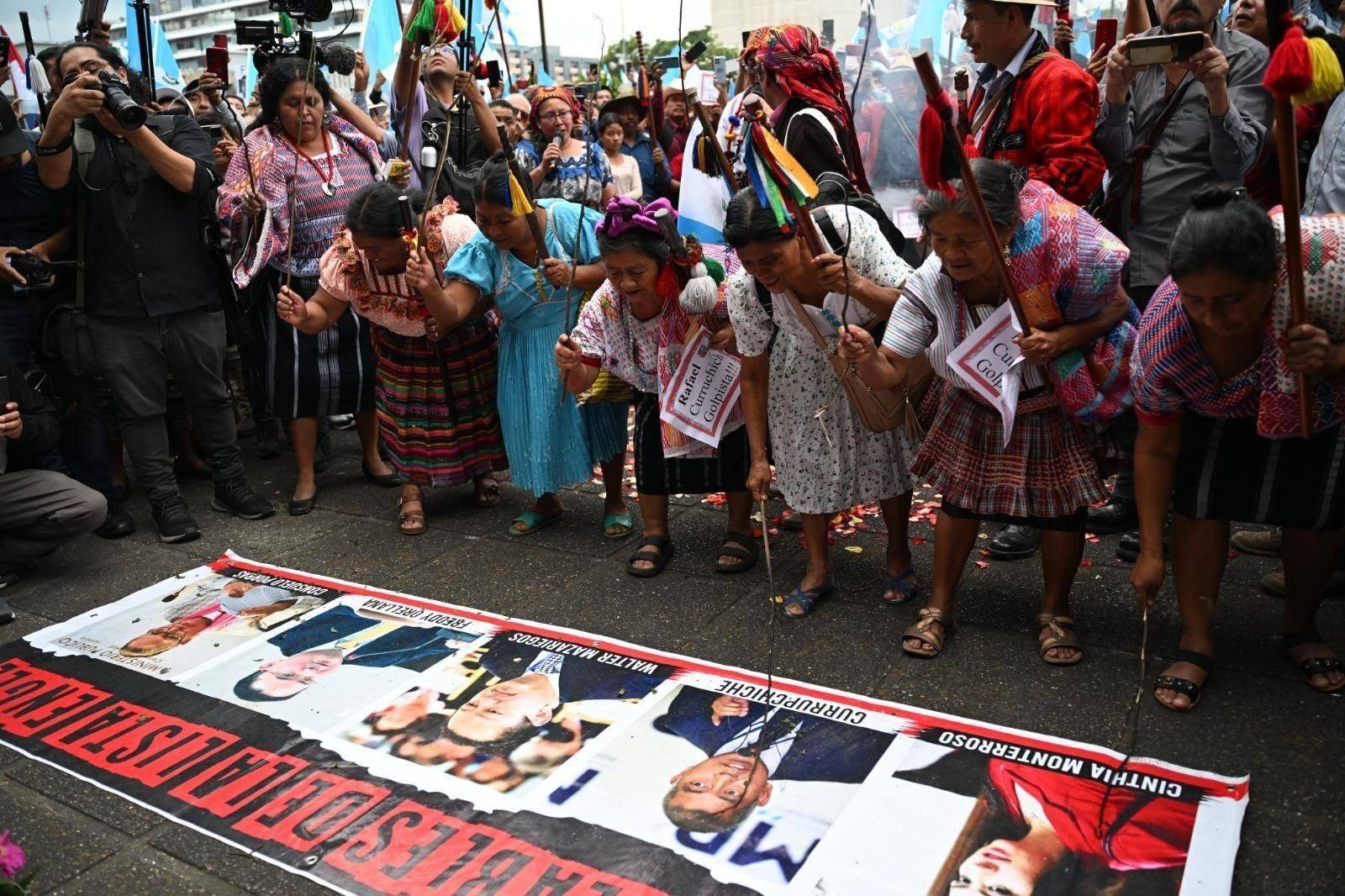
Ancestral Authorities from different Maya Peoples apply the sacred Xik'ay to images of officials accused of corruption during Guatemala's 2023 National Strike. This ancestral practice of community justice symbolizes popular rejection of impunity. Photo by Prensa Comunitaria, 2023.
Two years later, the memory of that movement remains alive, as communities continue defending the values that inspired the 2023 strike. At the same time, several Indigenous Authorities who played a key role in coordinating the mobilizations continue to face criminalization for their leadership, showing that the struggle for democracy and dignity is far from over.
Three of them—Héctor Chaclán, Luis Pacheco, and Esteban Toc—were detained and are awaiting trial on charges of illicit association, sedition, terrorism, obstruction of criminal proceedings, and obstruction of justice. Chaclán and Pacheco remain in pre-trial detention, while Toc was released on bail.
A member of the Association for Justice and Reconciliation (AJR) reflects on the Strike from two years ago:
“The Strike was very important for the people; if we hadn’t done it, the corrupt would have continued trampling over us. As AJR, we supported each other across different regions and with various organizations — united, we didn’t back down when something happened in our country, and we ensured that the presidency chosen by the people was respected. Even though some leaders who led the strike are currently criminalized, we see that we succeeded in keeping corrupt individuals, who are not good leaders for the country, out of government.
We need to continue organizing for the changes to come. There are new processes for electing the Attorney General and magistrates, so we must remain vigilant and act. As survivors, we do not stay behind; we survived the bullets that chased us during the Armed Conflict, and despite that, we have achieved many things. We believe it is necessary to keep fighting — holding conferences, issuing statements, and organizing demonstrations — we will not stand idly by.”
The anniversary is not only a remembrance, but a call — to recognize the Peoples of Guatemala as the living heart of democracy, defenders of the earth and of truth. Their struggle continues to remind the world that justice is not granted from above, but built from below, through the courage of those who refuse silence and keep the ancestral fire of resistance burning for generations to come.

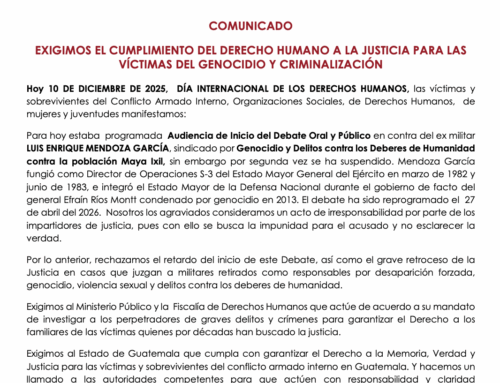
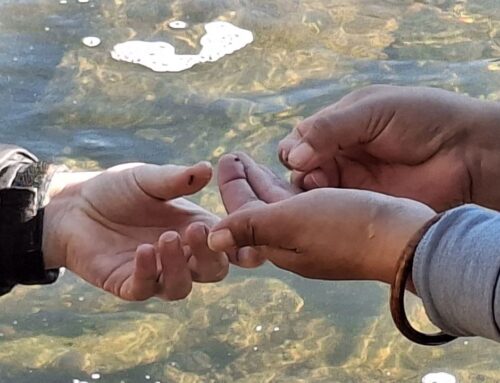
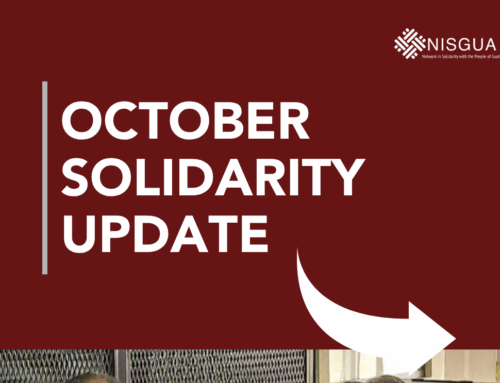
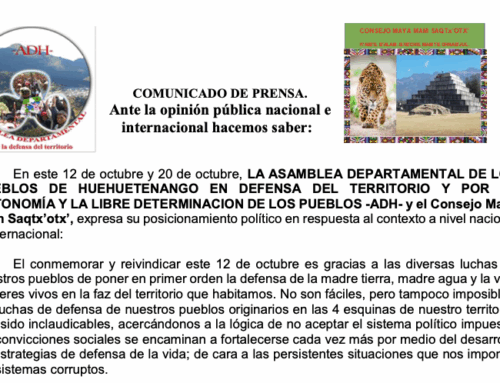
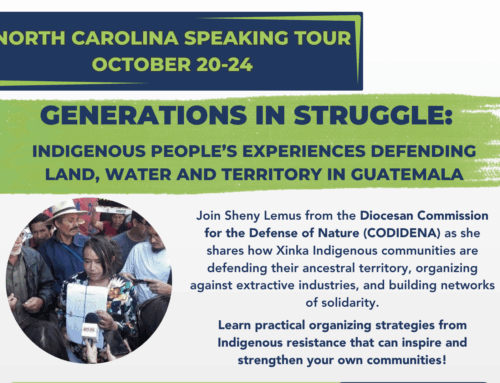
Leave A Comment